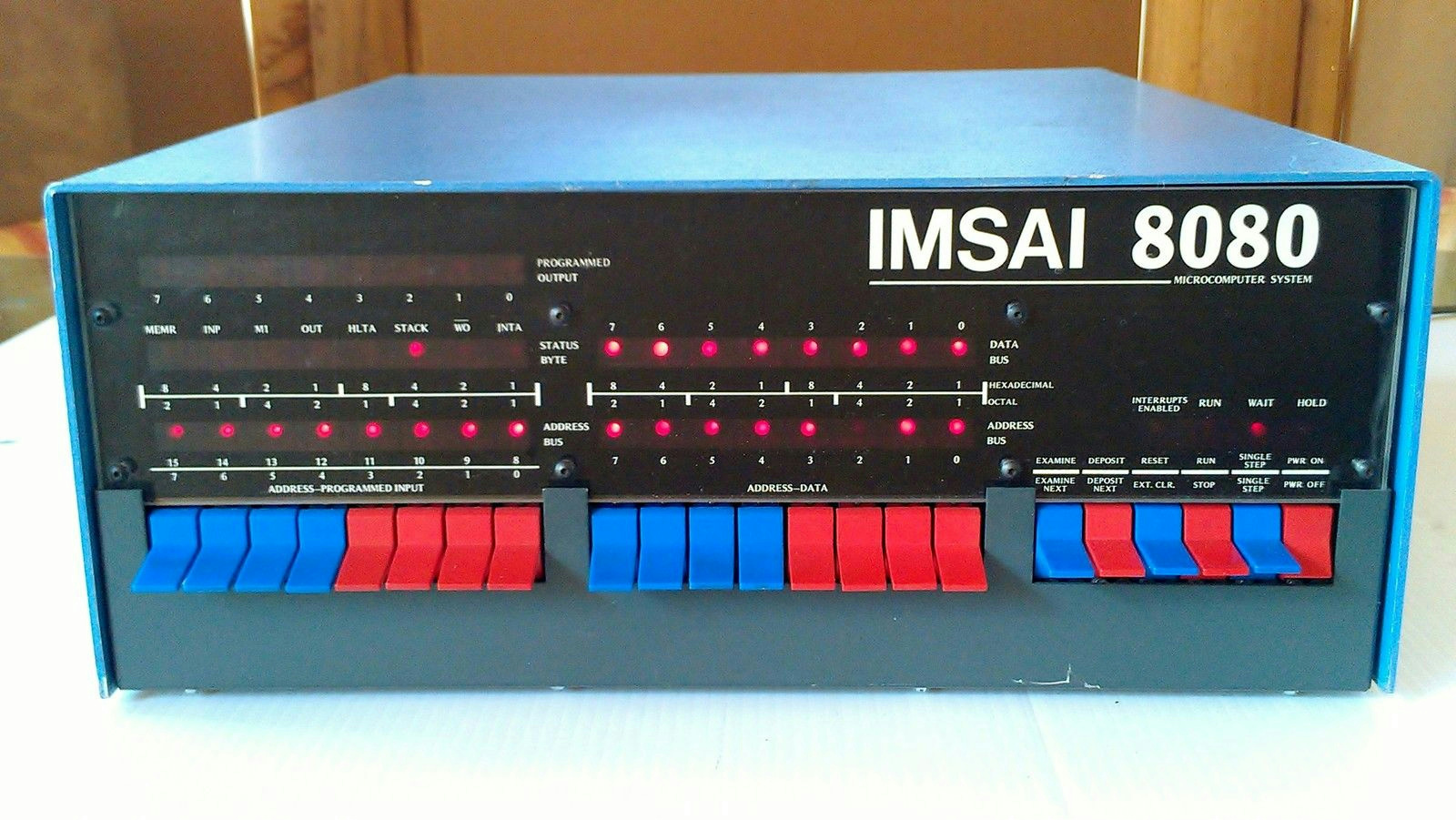Boot from a cassette? Floppy disk? BBS? What were those? No such animal in 1976!
No affordable printers, either…I could go on, but I won’t.
In spite of the limitations and drawbacks, with a friend’s help and 2 years work, I was able to build and program an IMSAI 8080 just like the picture above to display, edit and print music, all in 48K RAM + 8K ROM. This included hand-coding in machine language (not even an assembler used) a video driver, 3 keyboard drivers (1 text, 1 for music symbols, 1 piano keyboard), a graphic video display, a text video display, a sound output, a ROM burner, not to mention writing an OS and wiring all interface boards. We did eventually add a dual floppy drive, but we had to program that driver from scratch, too.
RE: front panel lights
You had to learn to read binary in either octal or hexadecimal. The IMSAI could be constructed with the red & blue switches configured as hex, like in the pix, or octal, which would be (L-R) 2 red, 3 blue, 3 blue, or 2 blue, 3 red, 3 red. The colors didn’t change their function, just made is easier to learn hex or octal. Octal was more common when computers were smaller, but hex became more useful and is still used today.
You had to mentally add the binary values of each light (on=1, off=0) to create a 2-digit hex number. Example: 0010 1100B = 2C hex
Since data was in 8-bit bytes, one bank of switches was sufficient, but for a 16-bit address, both banks were concatenated, and served for a memory address.
In the high school class my friend taught, the kids memorized the cassette boot loader sequence and had races to see who could hand-enter it the fastest, as RAM was cleared when the computer was turned off.

